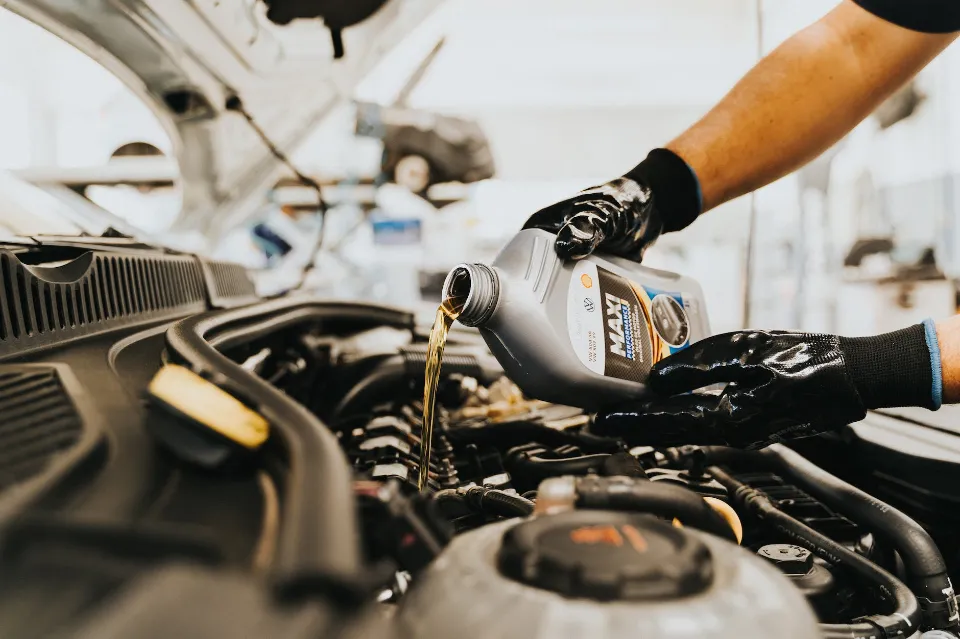Although it is technically possible to add fresh oil to a hot engine, it is safer to wait 20 to 30 minutes after the engine has been turned off.
Adding oil to a hot car is possible, but you should only do it if you need to top it off. When doing that, though, you must exercise extreme caution.
The Ideal Temperature for Changing Your Engine Oil
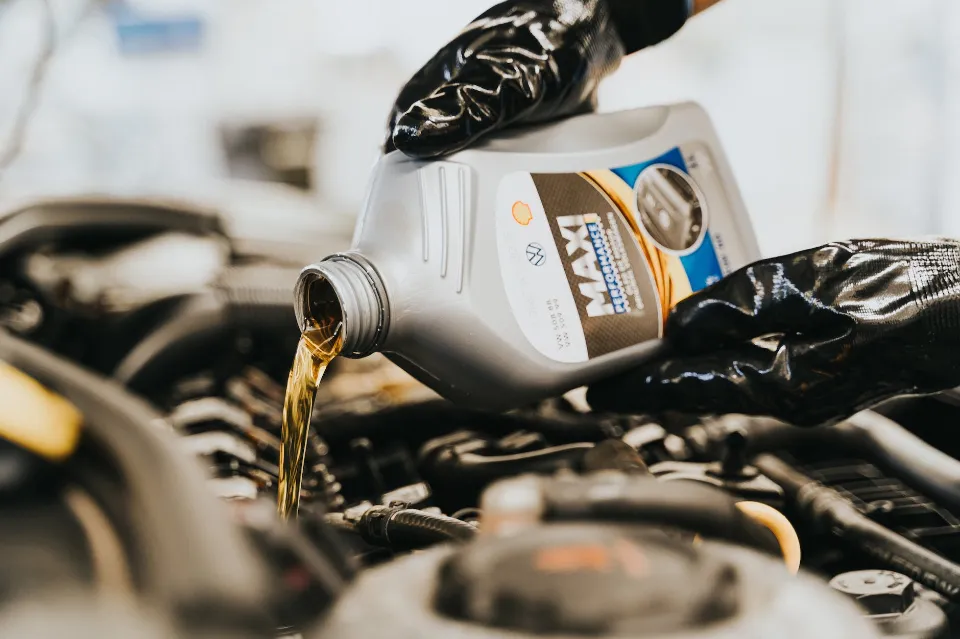
You’ll want to add oil when the engine is warm rather than hot, as this will allow the oil to move freely without putting you at risk of an accidental burn. In spite of this, adding motor oil to a hot engine won’t hurt it; however, the chances of getting burned are much higher.
When checking the oil level, a hot engine is preferable to a hot one. You might not get an accurate reading from your oil dipstick because hot oil expands and occupies more space.
Read More: Can You Mix Regular & Synthetic Oil
To get to the right engine temperature before you put oil in or top up:
- With a hot engine: Start by turning off your hot engine if it has been running for some time. Draining the old oil and adding new oil should be done after the engine has cooled for 20 to 30 minutes.
- With a cold engine: Prior to changing or topping off the oil level, start your car and let it run for a few minutes to warm up.
Why Engine Oil is Important
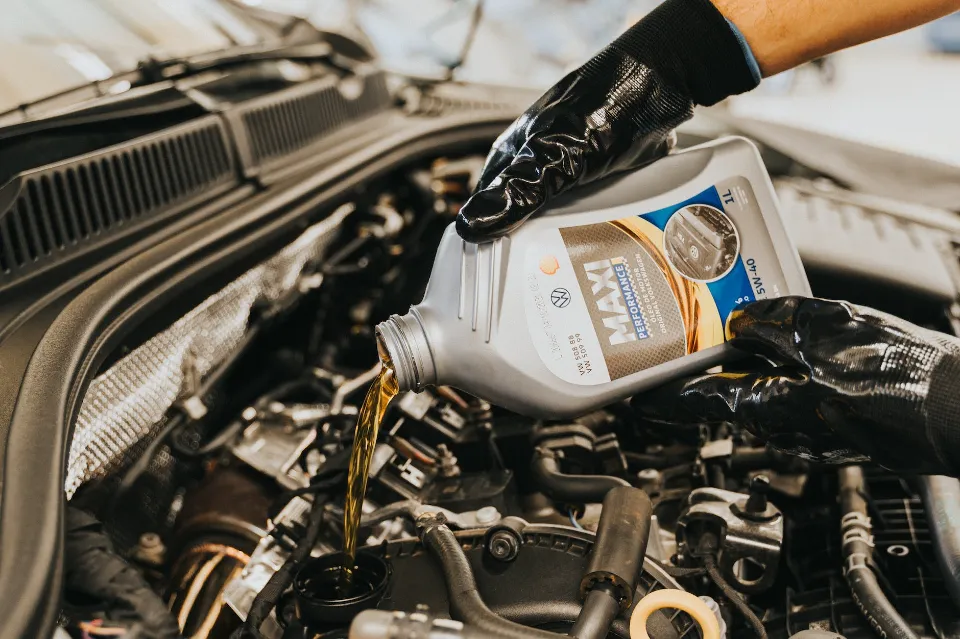
Engine oil is a vital fluid that keeps your hot engine durable and allows it to run smoothly and efficiently.
1. Lubrication
Your engine’s oil is its lifeblood because it keeps all of its internal parts lubricated. Engine oil is used to lubricate everything, including the pistons, crankshaft bearings, and valves. To ensure smooth motion and lessen metal-to-metal contact, the oil forms a thin film between these components.
In addition to extending the lifespan of these parts by reducing friction, engine oil also keeps the engine operating at its best, resulting in increased power and better fuel economy.
The demands placed on modern engine oils are varied. They keep their viscosity at both cold and hot temperatures and are made to lubricate a wide variety of parts, including bearings and piston rings.
It’s a difficult task, and it is, which is why I always advise investing a little more money in higher-quality engine oil. The hot engine will last longer if you use better engine oil because it will ensure that every component is optimally lubricated.
2. Cooling
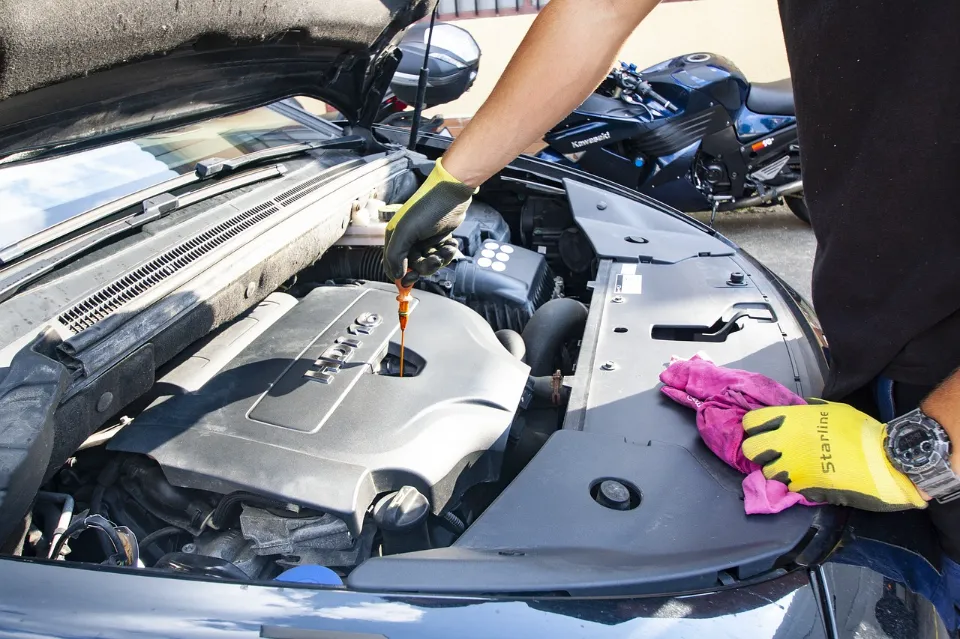
Cooling is a lesser-known function of engine oil. While it is true that the coolant performs that function, engine oil is even more crucial for cooling than one who is unfamiliar with how hot engines operate.
In particular, the coolant handles cooling the engine block and cylinder head while the oil cools the internal moving parts. In particular, heat is constantly produced by the internal engine parts as they move, and if this heat is not properly controlled, it can overheat and seriously harm the engine.
Engine oil moves throughout the engine, absorbing and dispersing heat away from important parts to maintain the proper operating temperatures. Through its lubrication abilities, the oil also cools those components; for instance, a bearing would melt if it weren’t lubricated.
3. Cleaning and Protection
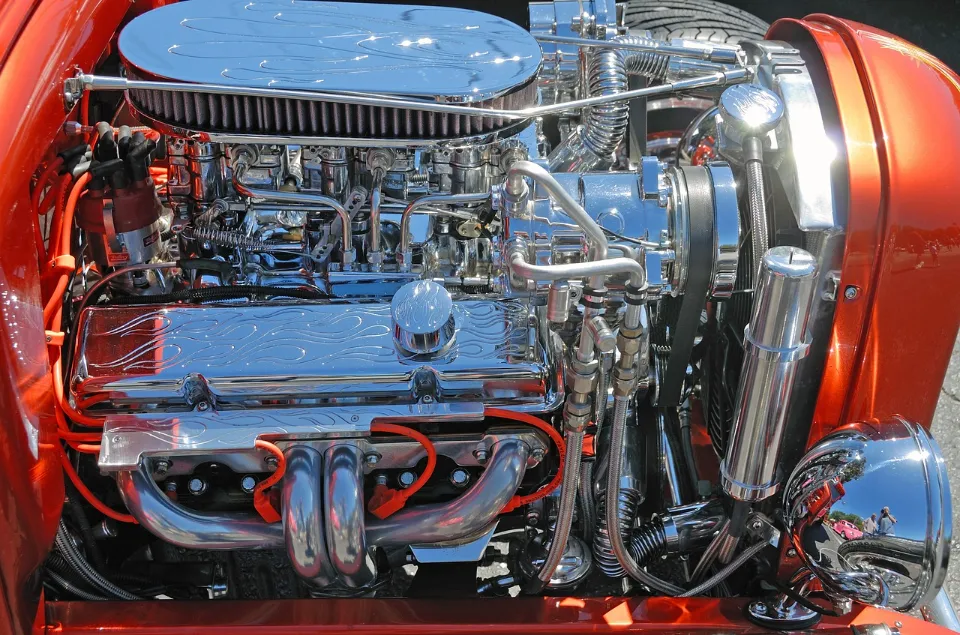
Small metal shavings are created when the engine’s internal components rub against one another, and combustion byproducts can build up in the engine as well. Furthermore, some of the debris from the atmosphere will still enter the hot engine even though the air filter removes the majority of it.
Nevertheless, it won’t be a problem because the engine oil will clean the engine of all that debris. It has degreasers and dispersants that help suspend and get rid of these impurities, preventing them from accumulating and becoming harmful deposits. Engine oil also has anti-corrosion additives that shield metal surfaces from rust and corrosion and thus increase engine longevity.
The oil filters then remove the dirt from the moving parts that was removed by the oil’s circulation inside the engine. Since the oil filter must always be changed along with the oil, failing to do so could result in the dirt entering the engine again and creating a variety of problems.
Can You Add Oil to a Hot Engine?

Yes, if you need to add oil quickly to a hot engine. When doing that, though, you must exercise extreme caution. You should pay attention to the following.
If at all possible, wait between five and ten minutes after turning off the hot engine for it to begin to cool down slightly. By doing this, you will lessen your chance of getting burned and increase the precision with which the oil level is read. Additionally, when pouring oil into a hot engine, I highly advise using a funnel. The funnel will reduce spills, help you finish the job faster, and keep everything organized.
After adding some oil, you should also make sure the engine isn’t overfilled by checking the oil level. Too much oil inside the engine can significantly increase the pressure inside and harm internal components, making it just as dangerous as too little oil.
Repeat the process if necessary until you see the oil reaching the “FULL” level on the dipstick. Additionally, remember to clean the dipstick before checking!
Finally, wearing safety equipment, such as gloves and long sleeves, can significantly reduce the risk.

Best Practices for Adding Oil to Your Hot Engine
Although adding oil is not a difficult procedure, adhering to the following guidelines will guarantee your engine’s top performance and longevity.
1. Checking Oil Levels
Although the dashboard light for low engine oil is present in every modern car, I still advise checking occasionally. This is because the light only shows you when the oil reaches the minimum level, yet for optimal engine performance, it is recommended to keep it at “FULL” whenever possible.
Here is how you can get the most accurate reading out of the oil dipstick:
- The engine must be parked on a level surface; otherwise, the readings may be inaccurate.
- Check the oil level after your hot engine has cooled down for 5 to 10 minutes because high temperatures can also cause inaccurate readings.
- Locate the dipstick: its handle is brightly colored, and it is usually marked with “ENGINE OIL” or the oil pan symbol, similar to the light on your vehicle’s dashboard.
- Using a cloth or paper towel, clean the dipstick after removing it.
- Check the oil level after fully inserting the dipstick once more into the tube. Between the dipstick’s minimum and maximum marks, the oil should be. You must add oil right away if it falls below the minimum threshold. However, you should also add oil soon if it reads below the “FULL” level on the dipstick.
2. Choose the Right Oil
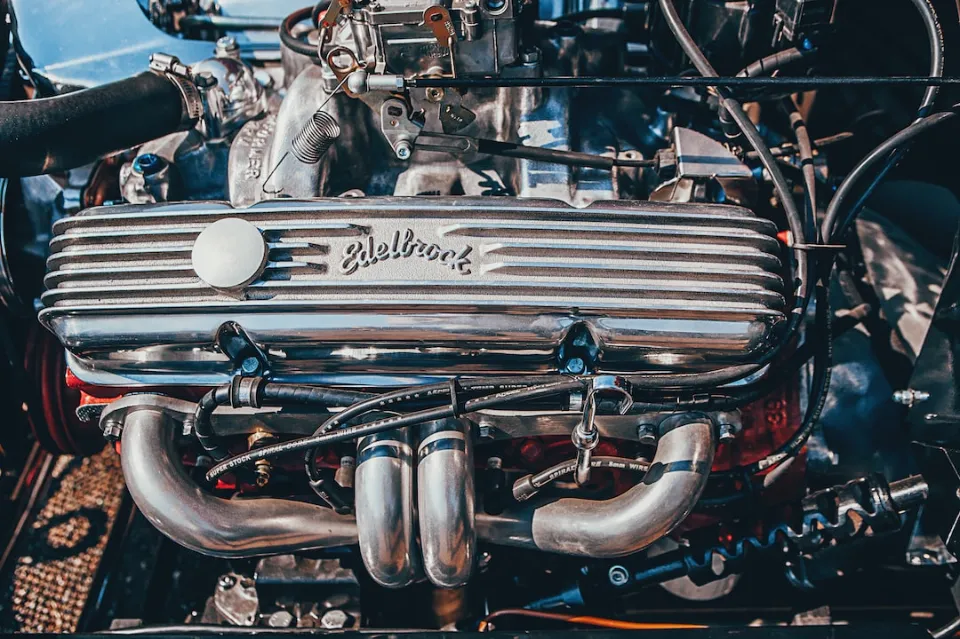
Selecting the proper oil for your hot engine is essential because it ensures both its longevity and smooth operation. Before settling on an oil grade that combines effectiveness, performance, affordability, and durability, automakers test a variety of oil types in that engine.
On the dipstick or in the owner’s manual, you can find the recommended oil grade for your engine. Two gradations may be displayed on some vehicles, with one typically being better for hotter climates and the other for colder climates.
The oil grade will be mentioned in the manual or dipstick (e.g., SN API), and viscosity (e.g., 5W-30). The two-letter code for the oil grade, or API specifications, designates the performance level and the engine type (S for gasoline engines and C for diesel engines, respectively).
The SAE viscosity rating measures the fluid’s resistance to flow, which identifies how the engine will behave at various temperatures. Typically, SAE viscosity ratings are denoted by a number, a letter (W for winter), and then another number (e.g., 5W-30 or 10W-40). The multi-grade rating system is what is used in this.
The first number indicates the viscosity of winter oil, i.e., its resistance to flow at lower temperatures. In general, an oil with a lower number is preferable, especially if you live in an area with icy winter conditions because it would flow more easily inside the hot engine.
The second number displays the oil’s viscosity at high temperatures, such as those that occur in the summer or when driving aggressively. In this situation, a higher number is preferable as it guarantees that the oil will maintain its protective film better at higher temperatures, lowering the possibility of engine wear and damage under high-stress circumstances.
3. Adding Oil Safely
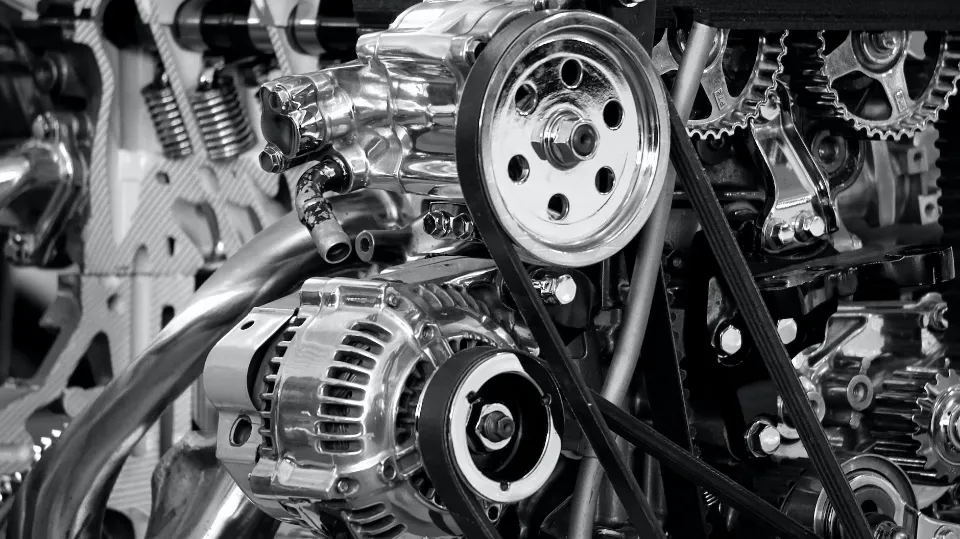
Here are the steps you need to follow to add oil safely and effectively:
- Locate the oil filler cap: it will be situated on the top of the cylinder head and clearly marked with “ENGINE OIL” or the oil pan icon. Instead of putting the filler cap over the engine, which could easily roll over and fall into a difficult-to-reach area, remove it and put it in a safe location.
- Place a clean funnel inside; doing so will reduce spills.
- You don’t want to overfill the engine with oil, so it’s important to pour the oil in gradually. I advise checking the oil in more manageable amounts and the level in between additions.
- After removing the funnel, firmly tighten the oil filler cap.
You can see in this video how to completely add oil to your car. Check for a visual explanation, please.
How Often Should You Check Engine Oil Levels in Your Car?
The majority of automakers advise performing an engine oil check at least once per month or each time you fill up your gas tank.
In addition, a lot of contemporary vehicles have sensors that alert the driver when the oil level is too low by turning on a dashboard warning light.
Why Should You Change the Engine Oil Regularly?

On the long run, changing engine oil on schedule has a lot of advantages for your car’s engine. It is necessary for:
- Good performance of your engine
- Lubrication of the moving parts
- Reduction of friction
- Keeping engine temperature under check
Conclusion
If you have any queries about adding oil to a hot engine, I hope this article has covered them all. If not, feel free to contact me with any additional inquiries. Freely add anything else as well!
Having said that, please exercise caution when working on a hot engine because it is not a joke. Recently, a friend of mine accidentally spilled some oil onto the hot exhaust manifold, where it ignited and started a small fire. If he had spilled more, it might have been serious, but it wasn’t. Utilize safety equipment, take your time, and don’t skip any steps.
FAQs
What Happens If You Put Oil in a Hot Engine?
The worst case scenario is that adding oil to an engine that is already too hot could result in smoke or even a fire. Additionally, oil burns are a very dangerous accident because the engine oil is extremely hot at this time. You should wait for the oil to cool down for about 2 hours before beginning to change the oil.
Should You Wait for Engine to Cool Before Adding Oil?
Wait at least 20 minutes after your engine has cooled down to allow the oil to completely drain back into the sump.
Is It Better to Add Oil to a Hot Or Cold Engine?
Oil professionals agree that motor oil should be changed while it’s still hot, barring specific instructions to the contrary from the car manufacturer.

